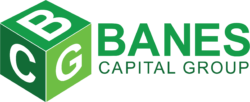The Blank Check
The debt ceiling was raised enough today to enable the U.S. government to pay its debts through early December. While most of us grow weary of lawmakers refusing to deal with such matters until fear mongering and last–minute theatrics have run their course, few of us really believe the U.S. will default on its debt. Fed Chair Jerome Powell said raising the ceiling was essential and that a failure to do so would be “potentially severe.” The Senate came up with a $480 billion debt limit increase (to $28.9 trillion) and handed it off to the House for today’s vote. Republicans said they won’t help in the process again – insisting that Democrats ‘own’ the process since they have complete control. Crisis averted … next crisis please? Something tells us we won’t have to wait long.
Quick Links
In the category of ‘you can’t make this stuff up’, Treasury Secretary (and Former Fed Chair) Janet Yellen suggested the U.S. should just abolish the debt ceiling. To avoid the inevitable ‘catastrophe’ of default, that thought process is: ‘Who needs one anyway? We’re just going to keep raising it!’ If there’s one thing Congress does very well, it’s to ‘kick the can down the road!’ We helplessly raise our hands in disbelief as spending is never controlled. With most of our readers being financial institutions, we think it highly unlikely if any would approve an unlimited credit line to any borrower. Auto–magnate Henry Ford once said: “Givers have to set limits because takers rarely do.” On numerous occasions over the past few weeks, the Biden administration contended that the proposed $3.5 trillion spending package was going to have a zero cost! He said: “We pay for everything we spend.” If that’s the case, why do we have a growing deficit? The Bond Market Review determines the cost of the package to instead be $3.5 trillion.
Among others that said something similar, President Gerald Ford said: “A government big enough to give you everything you want is a government big enough to take from you everything you have.” Until searching anew, I always thought that was a Thomas Jefferson quote. There is very little fiscal responsibility in modern government and rather those that enrich their own coffers while finding ways to spend with reckless abandon. Jefferson did say: “I have the consolation of having added nothing to my private fortune during my public service, and of retiring with hands clean as they are empty.” Imagine any contemporary politician being able to make such a claim!
Looking Ahead
- Equity cycles are turning sideways to better into October 26th and November 3rd
- Bond yields should trend lower into a trend change near October 18th
The Never-ending Story
The Fed wanted to begin tapering asset purchases in September, but the August payroll numbers weren’t good enough. Afterwards, Powell said he wanted to see another good payroll result before beginning to wind down purchases. However, with Friday’s report, September was yet another miss. The BMR was early to question the Fed’s stance on the rise in inflation being only ‘transitory.’ Despite massive evidence to the contrary, they’re hanging on to that narrative. Even the Fed’s favorite inflation gauge is the highest in 30 years! The PCE Deflator rose from 4.20% to 4.30% and the Core annual pace (ex food & energy) remained at 3.60%. Used car prices have increased by the most on record with a 27% annual jump. Global food prices are at a decade high – and rental rates on housing are up more than 10% with some areas seeing annual increases surpassing 25%.
Baseball great Yogi Berra once quipped: “You can observe a lot by just watching.” That’s our belief as well. You can have more degrees than a thermometer and miss the greater picture. Higher prices and their trend have spoken volumes. Unintended consequences do as well. Vilifying the oil business has oil prices at 7–year highs. We used to be a major exporter and completely energy independent for the first time in ages. With Russian gas flows down by nearly 80%, natural gas prices in the EU have soared nearly 400% while increasing about 160% in the U.S. Prices in the EU were compared to an equivalent of $230/barrel oil (while trading at nearly $80/barrel here).
‘Just by watching’, we see continuing trouble for the employment picture. Things were beginning to click along nicely, but vaccine mandates are causing their own set of unintended consequences. The BMR is not the platform for opinions on those mandates, but we can see the ‘handwriting on the wall.’ Our observations are instead purely economics oriented. The September payroll numbers were disappointing. We think it’s going to get worse. Why? Police, military, teachers, truckers, firefighters, airline workers, health–care industry staff and many others are not going to abide by vaccine mandates. Why would these – and especially health–care workers reject the jab at the risk of losing their jobs? Many are quitting voluntarily! They’ve seen the negative sides and those stories go widely unreported. If the government is determined to mandate injections as a condition for employment when science is often on the flip side – or Americans view their freedoms at stake, we’re looking at a slowdown.
The number of job openings (JOLTs data) declined in August for the first time this year. July’s 11.098 million available positions fell to 10.439 million – still well above the number of unemployed Americans. However, the number of ‘quitters’ rose to 4.27 million as they either walked away from jobs, retired, or left to seek better positions. That ‘quits’ rate hit a record 2.9%.
2 weeks ago, Initial Jobless Claims jumped to a 7–week high – increasing from 351K to 364K. Last week, they dropped back to 326K. Continuing Claims fell by 9K to 2,811K and then dropped 97K to a pandemic low of 2,714K as extended benefits had expired. NFIB Small Business Optimism fell 1 point to 99.1 – the lowest reading since March. 51% of businesses had open positions available in September and a record 30% planned to hike wages.
For the most part, consumer confidence has been declining. Consumer Comfort dropped from 56.3 to 54.7, and then to 53.4 – hitting a 10–week low. Personal Finances fell from 69 to 68.5, and then to 67.2 – also a 10–week low. The Buying Climate fell from 49.1 to 47, and then to 45.6 – once again a 10–week low. University of Michigan Sentiment improved from 70.3, the lowest level in a decade, to 72.8. Current Conditions improved from 78.5 to 80.1. Expectations rose from an 8–year low 65.1 to 68.1. 1–year inflation expectations dropped .10% to 4.60%. MNI Chicago PMI (purchasing managers) fell from 66.8 to 64.7. ISM Manufacturing rose from 59.9 to a 4–month high 61.1. New Orders were steady at 66.7 and Prices Paid rose from 79.4 to 81.2. ISM Employment ticked up from 49 to 50.2. Wholesale Inventories rose 1.20% in August though Trade Sales fell by 1.10%. The service–sector outlook increased slightly – but at a high level and better than forecast, with a .2 improvement to 61.9. Employment fell from 53.7 to 53.0 – the lowest level this year.
In August, Pending Home Sales rose by a 7–month high 8.10%. That’s still a 6.30% drop versus August 2020. Home prices are the least affordable since 2008. Construction Spending was flat. In August, Factory Orders rose by 1.20%. Ex transportation, they were up by .50%. Orders for Durable Goods rose by 1.80% and .30% ex transportation. Capital Goods Orders rose by .60%. Personal Income rose by .20% in August, but Spending increased by .80% – reducing the savings rate.
Vehicle Sales fell in September – dropping from a 13.06 million annual pace to 12.18 million. Prices were much higher and supply (and parts) remained problematic. Inventory fell to modern record lows. Those are also reasons why used car prices are soaring. The U.S. Trade Balance just hit another record deficit with a rise from $70.3 billion to $73.3 billion. Toys and Pharmaceuticals led the way.
Wednesday is set for MBA Mortgage Applications (which fell by 1.10% and then 6.90% over the past 2 weeks), Consumer Prices (September CPI), and the minutes from the FOMC meeting that concluded on September 22. Thursday provides jobless claims data and Producer Prices (September PPI). IRS procrastinator’s Friday is loaded with Empire Manufacturing, September Retail Sales, Import Prices, Business Inventories, and the University of Michigan sentiment surveys. Next Monday (10/18) reveals September Industrial Production & Capacity Utilization, homebuilder outlook (NAHB Housing Market Index), TIC Flows (net foreign investment flows into U.S. assets), and the U.S. Treasury’s Monthly Budget Statement for September (to close out fiscal 2021). Tuesday follows with September Building Permits and Housing Starts. Wednesday give us the Fed’s Beige Book.
Treasuries, Agencies, and MBS
Into Friday, October 1st, the U.S. Treasury curve twisted steeper with 2 and 5–year yields falling .5 and 2 bps while 10 and 30–year rates rose by 1 and 4.5 bps. Last week, the curve lifted higher across the board while increasing more for the outer maturities. Yields rose by 5.5, 13, 15, and 13.5 bps for the 2, 5, 10, and 30–year sectors. The 10– year note hit our optimal yield target for this part of the move with a trip to 1.62% – for its highest reading since early June. 30–year yields were also the highest since June. 5–year yields rose to 1.06% – the highest since February 2020. Since hitting that 10–year target, longer rates have fallen a little. Yields were up by 2 and 1 bps at 2 and 5– years through today – but were 3.5 and 7 bps lower at 10 and 30–years.
On the last day of Q3, Fed Reverse Repos rose to another record of $1.605 trillion. With all the money being printed, investors often need someplace to park their short–term cash. As expected, Freddie Mac 30–year mortgage rates rose above 3% with a 13–bps increase from 2.88% to 3.01% for the last week of September. They eased back to 2.99% last week. Today, the Treasury sold $58 billion 3–year notes at .635%. That was the highest yield award since February 2020. Demand fell versus August and the buying group that includes foreign central banks accounted for 44.2% of the issue versus a prior 56.7%. The 10–year auction was much more solid! $38 billion 10–year notes (that followed the 3–year offering) came at 1.584%. Demand was comparable to August’s good result and foreign buying was equally high at 71.1%! The August 2031 maturity was reopened for this supply. The U.S. Treasury will auction $24 billion 30–year bonds on Wednesday (10/13).
Economics
It had appeared that the September payroll report would be a positive. Coming a few days before, the private payroll result from ADP Employment Change signaled good gains with a 3–month high 568K jobs added versus 430K expected. Challenger Job Cuts also showed 84.90% less firings versus September 2020 – and they announced record hiring plans of 939K. Nevertheless, Nonfarm Payrolls were a huge miss with a gain of only 194K jobs versus expectations of 500K! It was the smallest gain of the year – though Fed watchers are saying cumulative gains won’t deter the Fed’s plans to taper QE this year. The 2–month revision showed 169K more jobs, so that was a positive – but not enough to please the markets.
Private Payrolls added 317K jobs versus 450K expected. Manufacturing added 26K jobs. The U.S. Unemployment Rate dropped from 5.20% to 4.80% but the Labor Force Participation Rate dropped from 61.7% to 61.6% – with a large number of women exiting the job market. Average Hourly Earnings rose by .60% – accelerating the annual pace from 4.00% to 4.60%. Average Weekly Hours rose from 34.6 to 34.8. The Underemployment Rate fell from 8.8% to 8.5%. Government employment dropped by 123K for the largest decline in 11 months.
The number of job openings (JOLTs data) declined in August for the first time this year. July’s 11.098 million available positions fell to 10.439 million – still well above the number of unemployed Americans. However, the number of ‘quitters’ rose to 4.27 million as they either walked away from jobs, retired, or left to seek better positions. That ‘quits’ rate hit a record 2.9%.
2 weeks ago, Initial Jobless Claims jumped to a 7–week high – increasing from 351K to 364K. Last week, they dropped back to 326K. Continuing Claims fell by 9K to 2,811K and then dropped 97K to a pandemic low of 2,714K as extended benefits had expired. NFIB Small Business Optimism fell 1 point to 99.1 – the lowest reading since March. 51% of businesses had open positions available in September and a record 30% planned to hike wages.
For the most part, consumer confidence has been declining. Consumer Comfort dropped from 56.3 to 54.7, and then to 53.4 – hitting a 10–week low. Personal Finances fell from 69 to 68.5, and then to 67.2 – also a 10–week low. The Buying Climate fell from 49.1 to 47, and then to 45.6 – once again a 10–week low. University of Michigan Sentiment improved from 70.3, the lowest level in a decade, to 72.8. Current Conditions improved from 78.5 to 80.1. Expectations rose from an 8–year low 65.1 to 68.1. 1–year inflation expectations dropped .10% to 4.60%. MNI Chicago PMI (purchasing managers) fell from 66.8 to 64.7. ISM Manufacturing rose from 59.9 to a 4–month high 61.1. New Orders were steady at 66.7 and Prices Paid rose from 79.4 to 81.2. ISM Employment ticked up from 49 to 50.2. Wholesale Inventories rose 1.20% in August though Trade Sales fell by 1.10%. The service–sector outlook increased slightly – but at a high level and better than forecast, with a .2 improvement to 61.9. Employment fell from 53.7 to 53.0 – the lowest level this year.
In August, Pending Home Sales rose by a 7–month high 8.10%. That’s still a 6.30% drop versus August 2020. Home prices are the least affordable since 2008. Construction Spending was flat. In August, Factory Orders rose by 1.20%. Ex transportation, they were up by .50%. Orders for Durable Goods rose by 1.80% and .30% ex transportation. Capital Goods Orders rose by .60%. Personal Income rose by .20% in August, but Spending increased by .80% – reducing the savings rate.
Vehicle Sales fell in September – dropping from a 13.06 million annual pace to 12.18 million. Prices were much higher and supply (and parts) remained problematic. Inventory fell to modern record lows. Those are also reasons why used car prices are soaring. The U.S. Trade Balance just hit another record deficit with a rise from $70.3 billion to $73.3 billion. Toys and Pharmaceuticals led the way.
Wednesday is set for MBA Mortgage Applications (which fell by 1.10% and then 6.90% over the past 2 weeks), Consumer Prices (September CPI), and the minutes from the FOMC meeting that concluded on September 22. Thursday provides jobless claims data and Producer Prices (September PPI). IRS procrastinator’s Friday is loaded with Empire Manufacturing, September Retail Sales, Import Prices, Business Inventories, and the University of Michigan sentiment surveys. Next Monday (10/18) reveals September Industrial Production & Capacity Utilization, homebuilder outlook (NAHB Housing Market Index), TIC Flows (net foreign investment flows into U.S. assets), and the U.S. Treasury’s Monthly Budget Statement for September (to close out fiscal 2021). Tuesday follows with September Building Permits and Housing Starts. Wednesday give us the Fed’s Beige Book.
Equities
Inasmuch as it seems the Dow Industrials have recovered lately, and they have risen over 1,100 points versus the close on September 30th (to finish out the month and 3rd quarter), they lost ground for that month and quarter. While it seems the ‘buy any dip’ strategy is still working, that’s only been true if you bought the right dips. The Dow lost 4.29% in September and 1.91% in the 3rd quarter – having made its high on August 16th. The S&P lost 4.76% for the month but etched out a .23% gain in Q3.
Into October 1st, the Dow lost 1.36%. Last week, it recovered 1.22% or 419.79 points to 34,746.25. With bonds closed on Monday, stocks started off well with the Dow up over 200 points. However, the Dow ended 250 points lower with a .72% loss to kick off the week – and was 1.06% lower by today. The S&P lost 2.21% and then gained .79% over the past 2 weeks. It’s .93% lower this week. The Nasdaq lost 3.2% and then gained a mere .09% over the past 2 weeks. It’s .78% lower this week. The Dow Transports lost .65% but then surged 2.73% over the past 2 weeks. They were .57% better through today. Bank stocks had back–to–back gains of 2.47% and 2.28% but have given way this week with a 1.41% loss.
Other Markets
Crude Oil surged 2.57% and 4.57% over the past 2 weeks and is 1.63% higher this week. Commodities rose 2.25% and 2.19% – while adding .19% through today. Gold gained .42%, lost .04%, and was .11% higher through today. The U.S. Dollar gained .76% and then eased .03% higher last week. It’s .47% better this week. The Japanese Yen lost .29% and another 1.07% over the past 2 weeks. It has tumbled 1.22% this week. The Euro lost 1.06% and then .23%. It’s also lower this week with a .34% loss. Corn gained 2.80% and then lost 2.03% last week. It’s off by 1.51% this week. Cotton surged 9.99% and 3.82% over the past 2 weeks but lost 3.82% early this week.
“Any sufficiently advanced bureaucracy is indistinguishable from molasses.”
“If you don’t know where you are going, any road will take you there.” Lewis Carroll
Doug Ingram, Financial Economist
Additional Information is Available on Request
Banes Capital Group, LLC (BCG) has been granted permission by the author, Doug Ingram and Strategic Technical Initiatives, to distribute this market commentary (MC). All views, opinions and estimates included are his as of this date – and are subject to change without notice. Mr. Ingram’s views, opinions, and estimates are not necessarily those of BCG and there is no implied endorsement by BCG of any of the information contained within this MC (which may in fact directly conflict with those being published and distributed by BCG, whether or not contemporaneous). In the event of such conflict, BCG is not under any obligation to identify to you any such conflicts. This MC is for informational purposes only and does not constitute a solicitation or offer to buy or sell any securities, futures, options, foreign exchange or any other financial instrument(s) and/or to provide any investment advice and/or service. Although the information presented has been obtained from sources believed to be reliable, we cannot guarantee or assume any responsibility for the accuracy or completeness of the information shown herein.







